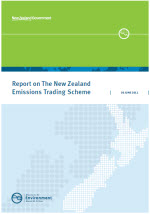
Simon Johnson guest posts on the mysterious number of emissions units allocated to emitters and a junk chart in the Ministry for the Environment’s Report on the New Zealand Emissions Trading Scheme.
You may recall that I previously commented on the low quality of data presentation in the Ministry for the Environment report Report on the New Zealand Emissions Trading Scheme.
My specific concern was that the report did not clearly indicate how many emission units (NZUs) had been allocated for free to emitters. Or, to say that again but slightly differently, what was the level of subsidy emitters had received in units?
Why am I going on about subsidies? Well, the point of an emissions trading scheme (ETS) is to place a carbon price on emissions. Free allocation of units to emitters unequivocally lessens the incentive effect of the carbon price. So free allocation is unequivocally a subsidy. The Australian Productivity Commission research report on carbon prices Carbon Emission Policies in Key Economies notes that all emissions policies involve either subsidies or prices and that imposing one measure implicitly imposes the other as well (page 49). Continue reading “The Minister’s chart-junk part 2”

 Simon Johnson continues his series of guest posts looking at the Australian and New Zealand carbon pricing schemes.
Simon Johnson continues his series of guest posts looking at the Australian and New Zealand carbon pricing schemes.